There are four principal uncertainties that plague virtually all climate models and predictions. These are
- Uncertainy in future emissions and the climate sensitivity to those emissions. Climate sensitivity was discussed in Module 2-4, and this will remain a source
of significant uncertainty. The figure below shows a probably scenario driven by increased emissions. On our current trajectory it is clear that we will reach 500-600 ppm of CO2 equivalent green house gas concentration. Whether or not we reach beyond 700 ppm depends entirely on the global deployment of renewable electricity generation and transportation. At the moment, the rate of deployment of those alternatives is no where
near large enough to alter the trajectory shown below. Reach 1000 ppm is likely catastrophic climate change.

- The resolution of the observational grid. Even though this has increased with time since the First Assessment Report of the IPCC in 1990 to the latest report in 2007, the observational
grid is still way too coarse to contain any clouds. So the observational input to climate models is still not very useful or constraining.
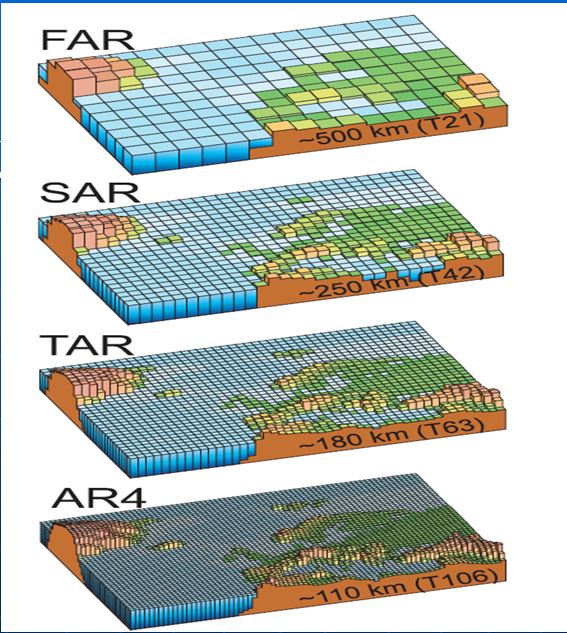
- The uncertain role of clouds as a feedback mechanism has enormous uncertainty. As shown in simplified, increasing cloudiness (and there is not yet any evidence for this - see below) could either act as a net cooling agent of a net warming agent.
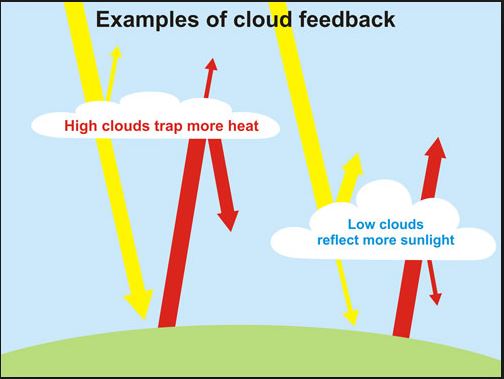
- Uncertain role of pollution and aerosols. The scattering properties of these agents is not well known. In general terms,
these small particles tend to reflect and scatter sunlight more than if they were not in the atmosphere. These leads to global cooling and in essence the atmosphere with respect to human intervention is in a constant tug of war between cooling and warming, depending on the form of pollution that dominates.
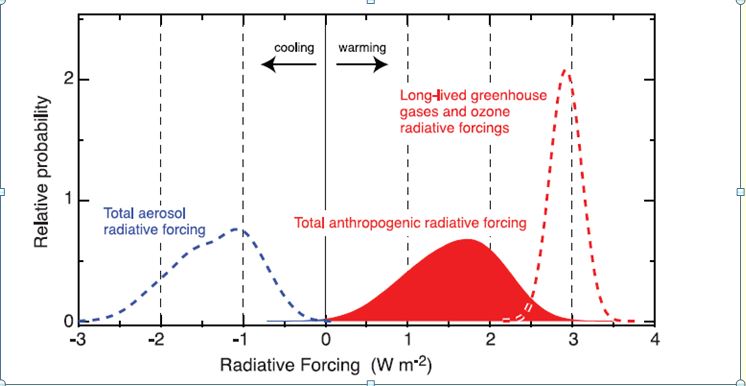
Most climate scientists agree that the role of clouds is the most uncertain feedback mechanism among a lot of available feedback channels. As shown below, these feedbacks could be mild (adding
as little as 0.5 C of warming to as much as 4.5 C)
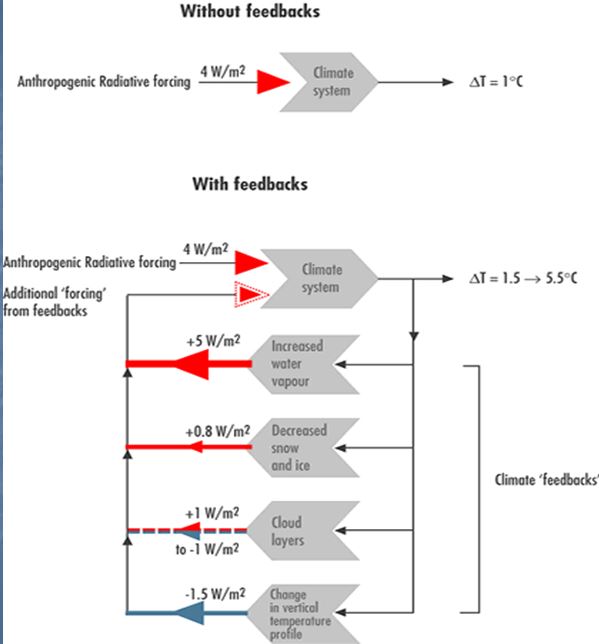
The issue of whether or not the Earth is getting cloudier is
unclear as we have no direct way to accurately measure this. Below is some data that may "formally" indicate and increase in
cloud cover, at a rate of about 1% per decade, but to me the data seems to be dominated by fluctuations which dampen any systematic trend. Very likely this issue will be the subject of a homework question so that you can do some research on this topic.
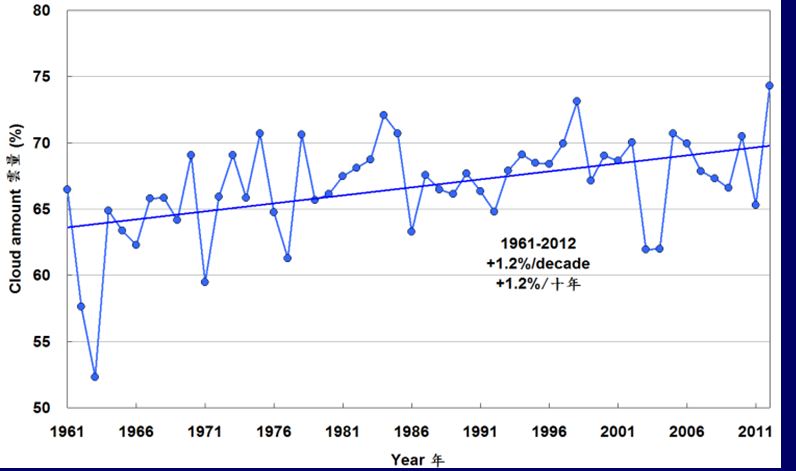
Shown below is the current best assessment of our future. The gray bell curve represents the basic consensus until strongly revised by better cloud models which essentially show that there is reasonable probability that global climate change could produce global surface temperatures in excess of +9 C (15 F) and again this would be catastrophic. Indeed, the
The 2013 world bank report already warns us that the window of
actual climate change avoidance has closed.

Of course the major uncertainty in all of this is that climate is very complicated and has all kinds of exchanges with various components within the earth system and we know very little about the rates associated with all the arrows shown below:
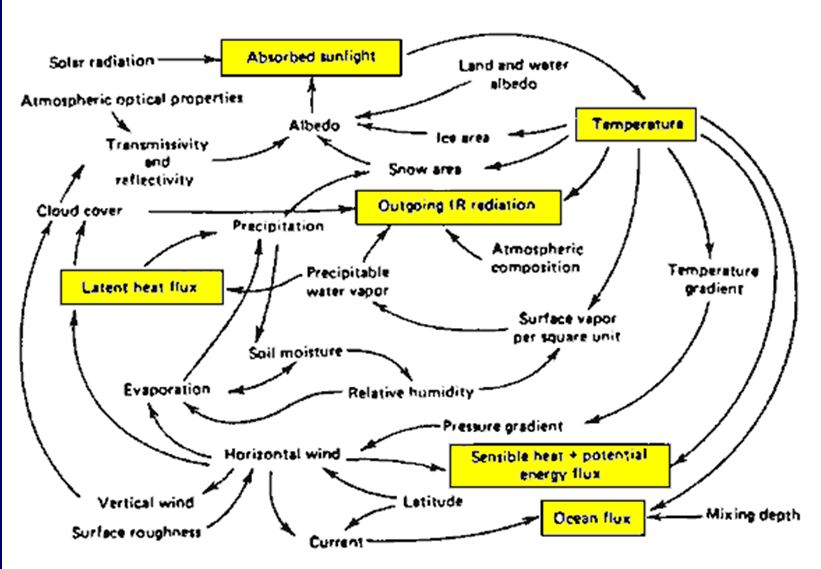
A slightly more understandable feedback loop is shown below. The two channels of high latitude warming that in turn produce more atmospheric heating or both viable. Observationally, we know that less sea ice and earlier snowmelt are both occurring so likely both of these feedback channels are currently operational.
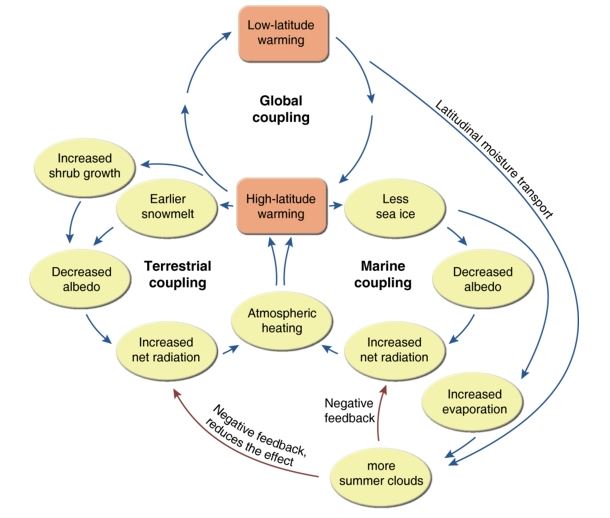
We close these notes by illustrating 5 main feedback loops that
can be operational. Most of these are self explanatory in the actual figures.
- The Water Vapor Feedback Loop. Since water vapor is the principle GHG anyway, then increases in atmospheric water content, primarily driven by increasing surface ocean evaporation, serves as a positive feedback loop.
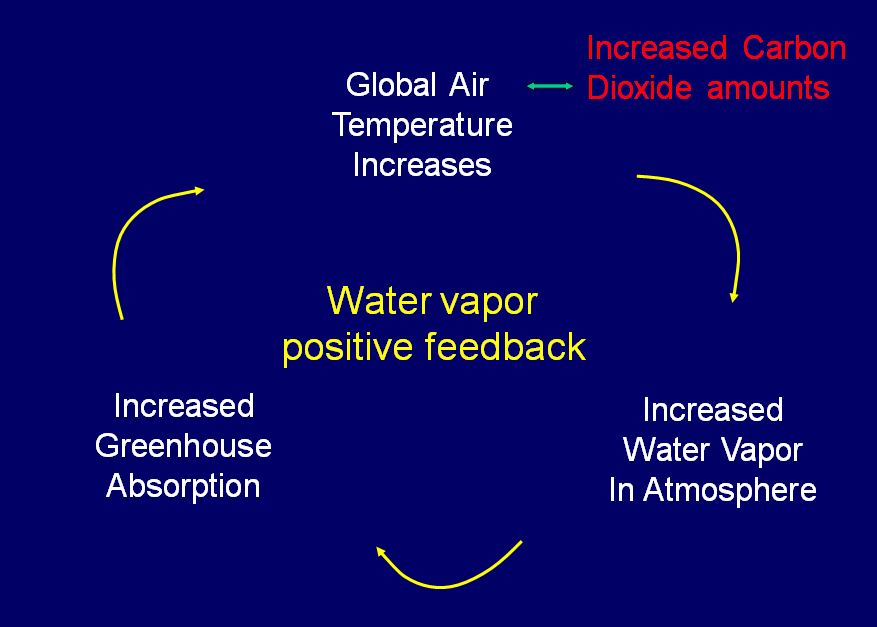
- Ice-albedo feedback. Less ice, less reflectivity, more
absorptivity by ocean thus making less ice leading to a runaway
effect. Data you saw earlier suggests this is starting to happen as of a few years ago.
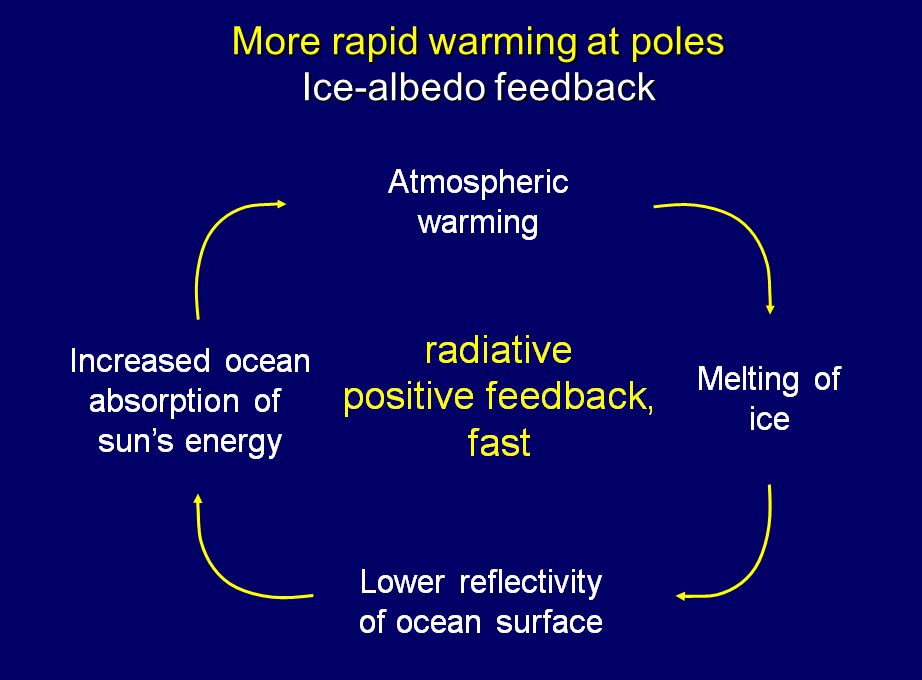
- Ocean-sink feedback. Warm water dissolves less CO2 than cold water. As the surface ocean warms its ability
to then mix CO2 pollution out of the atmosphere greatly diminishes. We are already on the diminishing curve
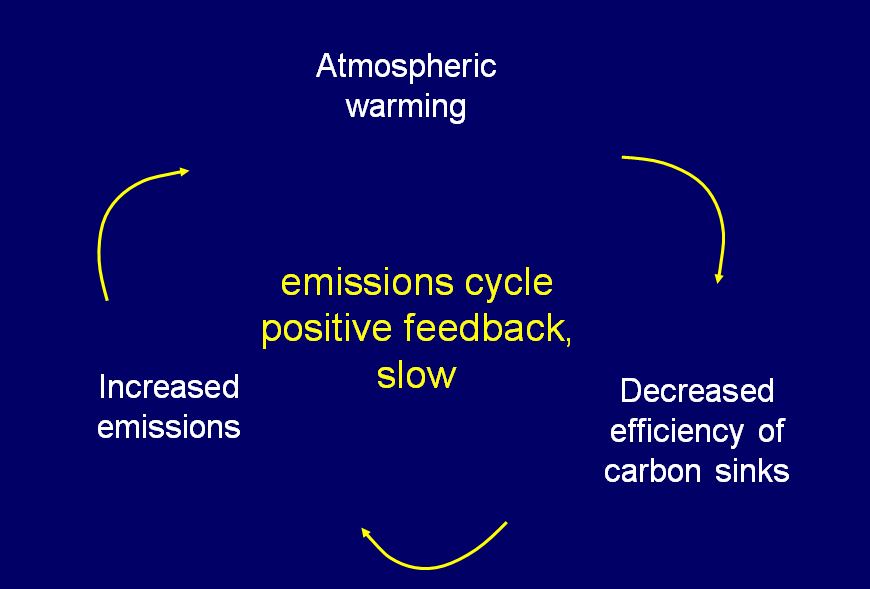
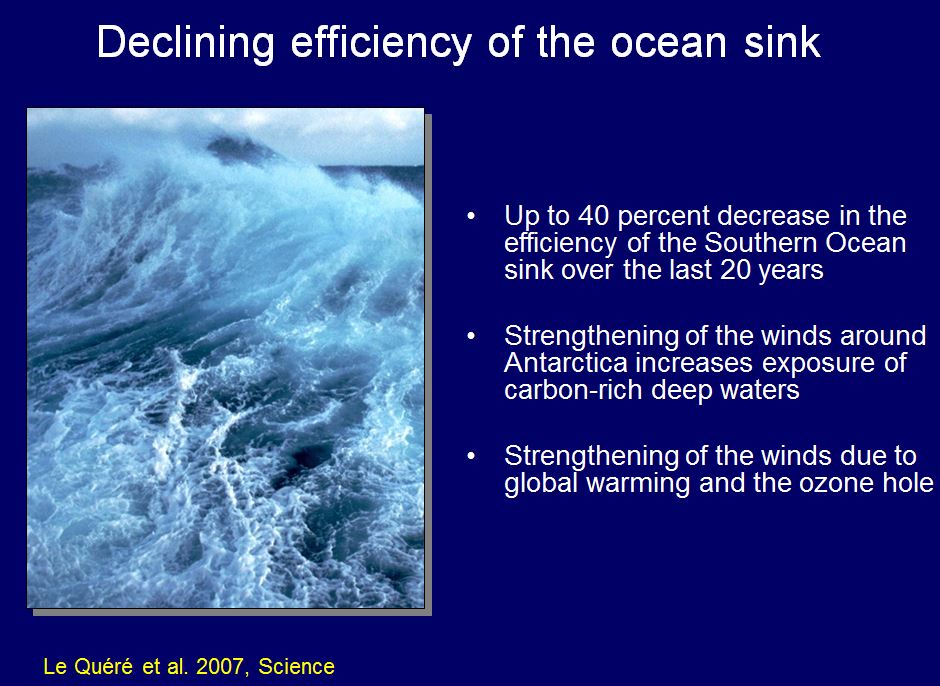
- Deforestation Feedback: This is potentially a relatively fast feedback channel but recent rates of deforestation are relatively small (since reforestation does occur). Of course,
any acceleration in the deforestation rate will accelerate this
positive feedback channel.
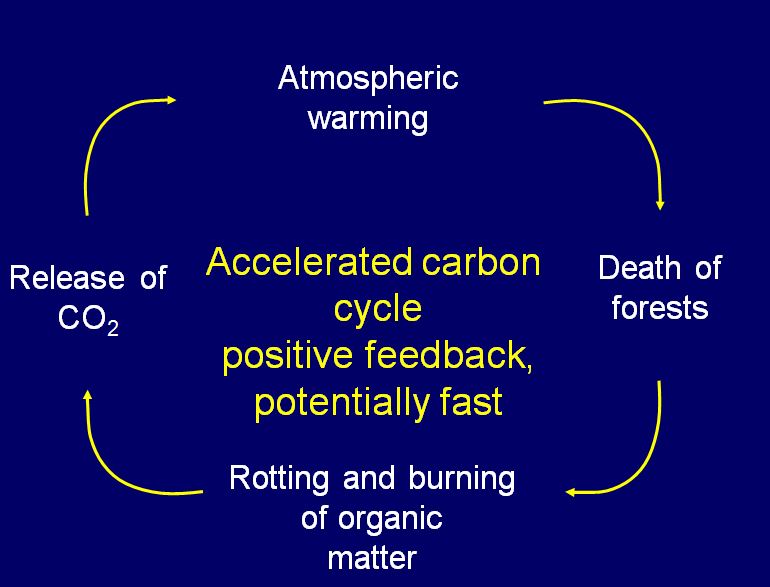
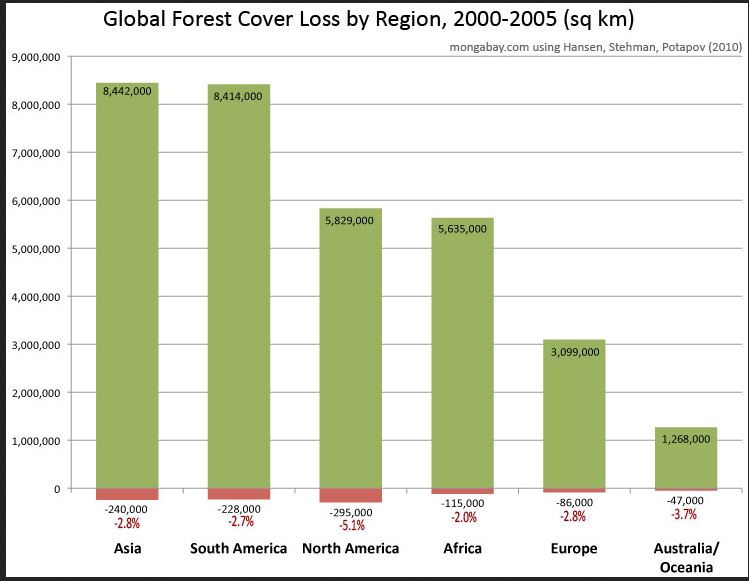
- The Permafrost Feedback Channel. This, by far, is potentially the most serious problem (and again is an assigned
homework problem). Simply put, this is the largest runaway process we potentially have . If all of the permafrost containing methane were released instantaneously to the atmosphere (of course this is physically impossible) warming of up to 20 C would occur. An excellent primer on this
problem is available HERE.
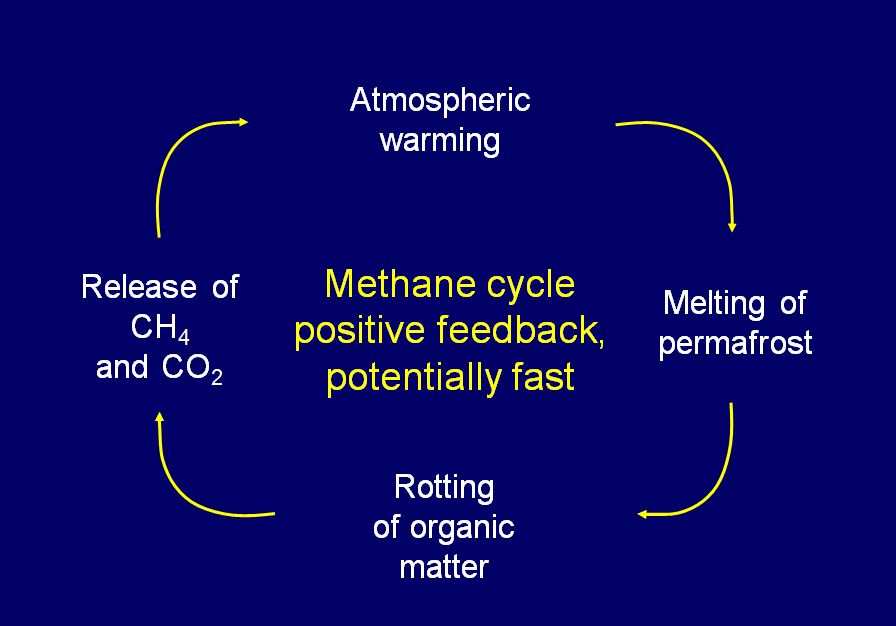
And many lakes in the Northern Latitudes, as of about 2009/10 are showing significant signs of bubbling (ebullient emissions)
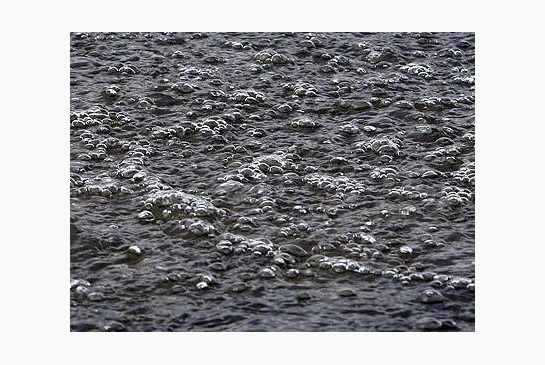
|
